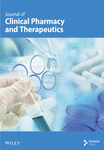INFLUENCE OF AGE AND CONCURRENT MEDICATION ON STEADY-STATE VALPROIC ACID SERUM LEVEL-DOSE RATIOS IN JAPANESE PAEDIATRIC PATIENTS
Summary
The effects of age and co-medication on steady-state valproic acid (VPA) level/dose {L/D) ratios were evaluated retrospectively in 382 paediatric patients. The VPA L/D ratio increased significantly with age up to 15 years of age in patients on monotherapy (L/D= 0·149 × AGE+ 2·708, n= 192, r= 0·549, P>0·001). In patients taking three or more anti-epileptic drugs, including VPA, there was no such effect. Associated anti-epileptic therapy affected the VPA L/D ratio, which was significantly reduced in patients on polytherapy as compared to patients on monotherapy.
Therefore, routine monitoring of VPA serum levels would be extremely useful, especially in the paediatric age group, and in patients who require associated anti-epileptic medication.




